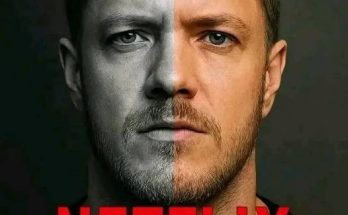When Netflix recently unveiled its dramatized exploration of Imagine Dragons—the band that went from scrappy beginnings to global takeover—it cast a spotlight on more than just the hooks and choruses. The story behind Imagine Dragons is as much about ambition, reinvention, loyalty, and risk‑taking as it is about chart‑topping singles and arena tours. Founded in 2008, rooted in Las Vegas and Provo, Utah, the quartet built its way up from small‑club residencies to becoming one of the best‑selling acts of the decade. AllMusic+4Wikipedia+4American Songwriter+4
The genesis of the band began when lead singer Dan Reynolds, then a student at Brigham Young University, met drummer Andrew Tolman. Together they decided to try their hand at forming a rock‑pop band, recruiting additional musicians and building demos in 2008. American Songwriter+2BYU Daily Universe+2 The name “Imagine Dragons,” revealed later to be an anagram of a phrase only the band knows, set the tone for a group determined to hold something mysterious, something for themselves in an industry that often exposes everything. American Songwriter+1 As they moved from Provo to Las Vegas—Reynolds’s hometown—the band began cutting their teeth: small shows, modest recording budgets, and the relentless hope of breaking out. American Songwriter+1
In those early years, they were far from fame. Reynolds has spoken about living together in a “tiny home” in Las Vegas, writing their goals on a whiteboard, one of which was, simply: “We will be a global band.” ABC News+2American Songwriter+2 That quixotic aim, bold at the time, eventually bore fruit. The band’s first widely heard single, “It’s Time” (2012), opened the doors—but it was their debut album Night Visions that truly launched them into the big leagues. The Hilltopper+2Wikipedia+2
“Radioactive” became the banner hit: it charted for 87 weeks on the Billboard Hot 100, was hailed by Rolling Stone as the “biggest rock hit of the year,” and cemented the band’s place in pop culture. The Hilltopper+1 The album showcased the band’s signature: anthemic choruses, heavy drums, bold electronic flourishes, and lyrics that combined urgency and vulnerability. From local acclaim to stadium lights, the leap was dramatic.
But the climb wasn’t smooth. Line‑up changes, shifting musical directions, and critical skepticism all hovered around the band. For instance, early on, members such as Andrew Tolman and his wife Brittany left the group, making way for guitarist Wayne Sermon, bassist Ben McKee and drummer Daniel Platzman. Wikipedia+2Reddit+2 Critics sometimes dismissed the band: while fans flocked to their concerts and videos, some felt the music leaned toward motivational platitudes. Wikipedia+1 Yet, perhaps because of this tension between popularity and critical cool‑factor, the band always felt like it was fighting for legitimacy while simultaneously dominating the charts.
The band’s second album, Smoke + Mirrors (2015), went to number one in the U.S., Canada and the U.K., proving the first success wasn’t a fluke. Wikipedia+1 With each subsequent release—Evolve (2017) and Origins (2018)—the band explored bigger soundscapes, more pronounced electronic elements and grew their global fan‑base. Origins, in particular, earned praise for its ambition and for addressing deeper themes than earlier records. uDiscover Music+1
What stands out in the story of Imagine Dragons is not just the hits or the numbers, but the fact that they did not simply ride one wave—they reinvented themselves while remaining accessible. They moved from indie‑club to arena, from raw‑rock to pop‑rock‑electro crossovers, all the while staying recognizable. Songs like “Believer,” “Thunder,” “Whatever It Takes”—all from Evolve—became global phenomena, climbing charts and becoming part of the cultural fabric. The Hilltopper+1
Moreover, the band’s roots in modesty and sweat earned them credibility. Reynolds has spoken about playing gigs for rows of twenty people, learning the grind of the road, and the significance of every opportunity—how “a tiny show for 20 people could be where you get your big break.” scoutlife.org That kind of mentality—of working, of persistence—permeates their story.
Another key facet is their willingness to embrace change and challenge. The band often speaks of itself as “genre‑less,” resisting the pigeonholes of rock or pop. Drummer Platzman, bassist McKee and Sermon all bring musical training (at institutions like Berklee) that gives their sound a solid underpinning even when it feels effortless. Wikipedia+1 Meanwhile, Reynolds’s personal journey has also become part of the narrative: from his Mormon upbringing to his advocacy around mental health and LGBTQ issues in recent years, these layers give the band more depth.
Philanthropy has become part of their legacy too. Inspired by friendships and personal tragedies, the band co‑founded the Tyler Robinson Foundation, a charity to help young people battling cancer. Wikipedia+1 Their songs, performances and public platforms increasingly reflect more than simply “get up and shout”—they reflect connection, survival and purpose.
Of course, no band story is without its shadows. The very mainstream success that made Imagine Dragons a household name also brought criticism. Some critics argued they were over‑polished or formulaic, others compared them unfavorably to bands like Nickelback. Wikipedia+1 But in many ways the band accepted that, stating openly that they know you either love them or you don’t—and that’s fine. Through that lens the drama of Netflix’s unveiling becomes richer: the struggle for authenticity, for staying hungry after success, for balancing mainstream appeal with artistic identity.
The global scale of their success is remarkable. With more than 74 million albums and 65 million digital songs sold worldwide, and over 160 billion streams across platforms, Imagine Dragons stand among the best‑selling music artists of all time. Wikipedia+1 They have topped charts, sold out stadiums and remained relevant in an era where musical tastes shift fast.
Behind those numbers lies the story of four guys (and more, through the years) who set out with big dreams, spent years in small venues, honed their craft, faced critiques, and kept moving. Reynolds’s recollection of listing goals on a whiteboard in a shared house in Las Vegas speaks to their grounded beginning. Starting from almost nothing outside of ambition, they built. That ambition included writing songs late at night, layering beats, mixing genres and listening to feedback but maintaining their identity.
The Netflix production, by spotlighting this journey, taps into more than hit songs. It taps into perseverance. It taps into change—both internal and external. It taps into the idea that success isn’t a straight line but a series of experiments, risks and reinventions. It taps into the question: what happens when you’re no longer the scrappy underdog, but a band with demands, expectations and legacy? How do you stay true while scaling up?
The band’s recent work—such as the double album Mercury – Acts 1 & 2 (2022) and their newest album Loom (2024)—shows they haven’t rested. They continue to push themselves creatively, embracing different production styles and maintaining a tight global touring schedule. Wikipedia Their arena tours now cover continents; their fans stretch across generations and geographies.
And yet, the human core remains. They still recognise the song, the performance, the connection with fans, the live surge of energy. The beginning club‑show leaps, the whiteboard ambitions, the Las Vegas rentals—all of that remain part of the mythology, part of what grounds a band in a world where rockets launch fast but can also fall fast.
In many ways, the Netflix unveiling of “Imagine Dragons” is more than a band documentary. It is a testament to what happens when raw ambition meets persistence, when four (or more) musicians treat music less like fleeting pop art and more like a long‑haul journey. It is the story of how a name—cryptic, personal, anagrammatic—became attached to thunderous waves of drums, roaring choruses, arena lights, and billions of streams. It is the story of how a band from Las Vegas and Utah welded together, changed, grew, and never forgot—to play hard, to connect, to evolve.
The global fascination with Imagine Dragons rests not only in their catchy songs—from “Radioactive” to “Believer” to “Thunder”—but in the narrative of growth, struggle and reinvention. For any aspiring artist, their trajectory offers lessons: work the small stage, be unafraid to experiment, hold to your identity, lean into teamwork, and yes—dream big. The fact that they famously scribbled their “global band” goal on a whiteboard years ago, and later watched it manifest, is not a press‑release line—it’s a real thread through their history.
As the Netflix version reaches audiences worldwide, it invites us not just to listen to the songs again, but to hear the echoes behind them: the cramped Las Vegas domicile, the whiteboard listing goals, the days when 20 people mattered as much as 20,000, the transition from hopeful to global. It reminds us that even in an age of streaming and algorithms, the essence of a music band remains human: connection, craft, ambition, and the courage to keep going.
In that sense, the story of Imagine Dragons is thrilling—not just for the hits, but for the hustle, the pivoting, the staying power. And if you watch the Netflix version, you’ll see that beneath the spectacle lies something recognizable: four guys from somewhere, dreaming of everywhere, who dared to imagine dragons and, in doing so, set the world ablaze.



